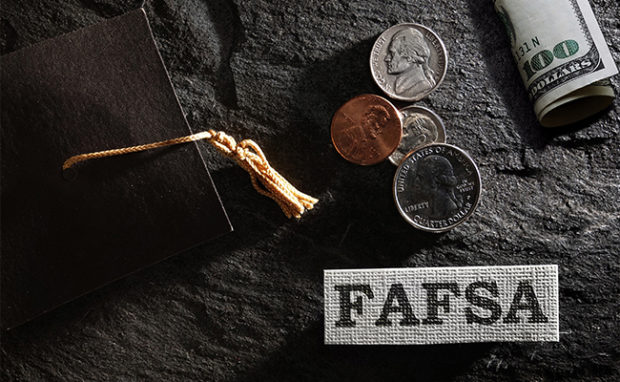How First-Time Borrowers Can Choose the Right Student Loan
Selecting the right student loan is a big issue for undergraduates-to-be, most especially first-time borrowers. This guide contains the information you need to get started with your loaning process. You also have to understand the student aid available such as the Federal student aid (FAFSA) and Federal student loans.
Any first-timers here? Yeah, you’re highly acknowledged. As a first time borrower, you should check if the loan you’re about to apply for is the right student loan for you. Below is a list of the essential points discussed in this guide.
Ready For a Quick Quiz?
Who is a First-Time Borrower?

A first-time borrower is a newly-admitted or undergraduate student that is applying for a loan and has below 30 credit hours.
The loan funds are delayed for 30 days before disbursing to new borrowers while “old” borrowers get their funds in a few weeks before lectures begin.
First-time borrowers have a minimum of 30 days to reconsider their decision. If the new borrower withdraws during the initial 30 days of the lecture, the loan would be terminated. No repayment is required.
During the 30 days grace period, it’s pertinent for first-time borrowers to reconsider if the loan is the right student loan.
Why Every First-Time Borrower Needs Entrance Counseling
Entrance counseling is a joint or personal counseling session aimed at enlightening first-time borrowers on their rights, duties, and limitations as a loan borrower.
For Stanford students borrowing Federal loans, entrance counseling is compulsory.
Entrance counseling is essential in determining if the loan you’re applying for is the right student loan. There are many factors on determining loan terms like interest rate, loan amount, and credit history.
Benefits of Entrance Counseling

The loan process is broken down for easier comprehension.
They teach first-time borrowers about how to manage their academic bills and other expenses.
Entrance counseling also exposes new borrowers to various ways of planning repayment schedules.
The counselors teach the best ways to avoid defaulting on student loans.
What are the Types of Federal Student Loans Available for First-Time Borrowers?
Unlike private loans, federal loans have fixed rates that tend to be quite low if you have a decent non-credit score.
Federal loans offer various repayment options, such as income-driven repayment. They also have room for loan forgiveness.
At the federal level, there are two types of loans available for students: direct subsidized loans and indirect subsidized loans.
Enrolling is free and fair, but your family’s present monetary conditions would determine whether or not they would approve your application.
What are Direct Subsidized Loans
A direct subsidized loan is the best for lower-income undergraduates, whose families are struggling to make a living.
In other words, direct subsidized loans are for university students with demonstrated monetary needs.
This loan comes with no added interest. Borrowers make minimum payments six months after graduation.
How do Direct Subsidized Loans Work

The government takes care of the loan interest while you pay the rest of the amount borrowed.
Let’s assume you enroll for a cost of attendance of $13,000 direct subsidized loan during your first year. After you’ve graduated, the loan balance would remain $13,000.
They created the direct subsidized loan with lower-income students and affordable repayment plans in mind.
However, the amount each qualified person is entitled to depends on the university chosen.
The value of the direct subsidized loan cannot be more than the borrower’s approved financial aid need.
What are the Benefits of Direct Subsidized Loans?
The federal government takes care of the interest in the loan, in as much as the candidate stays in school.
Even after six months, the federal government is responsible for loan interests.
The government offers repayment programs or loan forgiveness programs.
What are the Cons of Direct Subsidized Loans?
Graduates do not qualify for direct subsidized loans. Only undergraduates can apply.
Students with rich guardians don’t qualify.
There’s a limit to the permissible borrowing amount via this program.
What are Direct Unsubsidized Loans?

Unlike direct subsidized loans, direct unsubsidized loans aren’t dependent on financial needs or family conditions.
It is the usual student loan every American citizen can opt-in for as long as they meet up with the loan conditions.
Though direct unsubsidized loans aren’t based on financial needs, they’re dependent on attendance fees and financial help.
This loan comes with interests. However, they allow deferment until six months after graduation.
When you defer payment, the loan balance increases with the interest.
How do Unsubsidized Loans Work
Direct unsubsidized loans are not need-based, so they aren’t subsidized.
During your undergraduate years, there is an obligation to pay off your interest.
Then, after graduation, you can start paying your remaining loan balance. This is usually the amount borrowed.
What are the Pros of Direct Unsubsidized Loans
Direct unsubsidized loans are accessible to both graduates and undergraduates.
There are no strict requirements such as financial hardships and family conditions to qualify for direct subsidized loans.
The loan limits of direct unsubsidized loans are more than that of direct subsidized loans.
What are the Cons of Direct Unsubsidized Loans
The borrower needs to pay every dime borrowed, including interests and other fees.
The six-month grace duration under subsidized student loans does not apply to unsubsidized student loans.
How can New Borrowers Find their Student Loan Account Number
Sometimes, getting your student loan account number is tasking.
To check your student loan account number, visit the TransUnion site or one of the other credit bureaus to get your free report.
This comes with your account number on it.
Also, you can simply get your account number by calling your lender’s customer care number.
SUMMARY
Thanks to the Department of Education Initiative for the federal student loan offers. Now you have a 30-day grace period.
It’s pertinent for first-time borrowers to reconsider if the loan is the right student loan after finishing their free application for federal student aids.
Many graduates are having difficulty paying back their student loans. This hinders them from thriving financially. Be sure this option is right for you.
Sponsored Advertising Content:
Advertorial or Sponsorship User published Content does not represent the views of the Company or any individual associated with the Company, and we do not control this Content. In no event shall you represent or suggest, directly or indirectly, the Company's endorsement of user published Content.
The company does not vouch for the accuracy or credibility of any user published Content on our Website and does not take any responsibility or assume any liability for any actions you may take as a result of reading user published Content on our Website.
Through your use of the Website and Services, you may be exposed to Content that you may find offensive, objectionable, harmful, inaccurate, or deceptive.
By using our Website, you assume all associated risks.This Website contains hyperlinks to other websites controlled by third parties. These links are provided solely as a convenience to you and do not imply endorsement by the Company of, or any affiliation with, or endorsement by, the owner of the linked website.
Company is not responsible for the contents or use of any linked website, or any consequence of making the link.
This content is provided by New Start Advantage LLC through a licensed media partnership with Inquirer.net. Inquirer.net does not endorse or verify partner content. All information is for educational purposes only and does not constitute financial advice. Offers and terms may change without notice.







